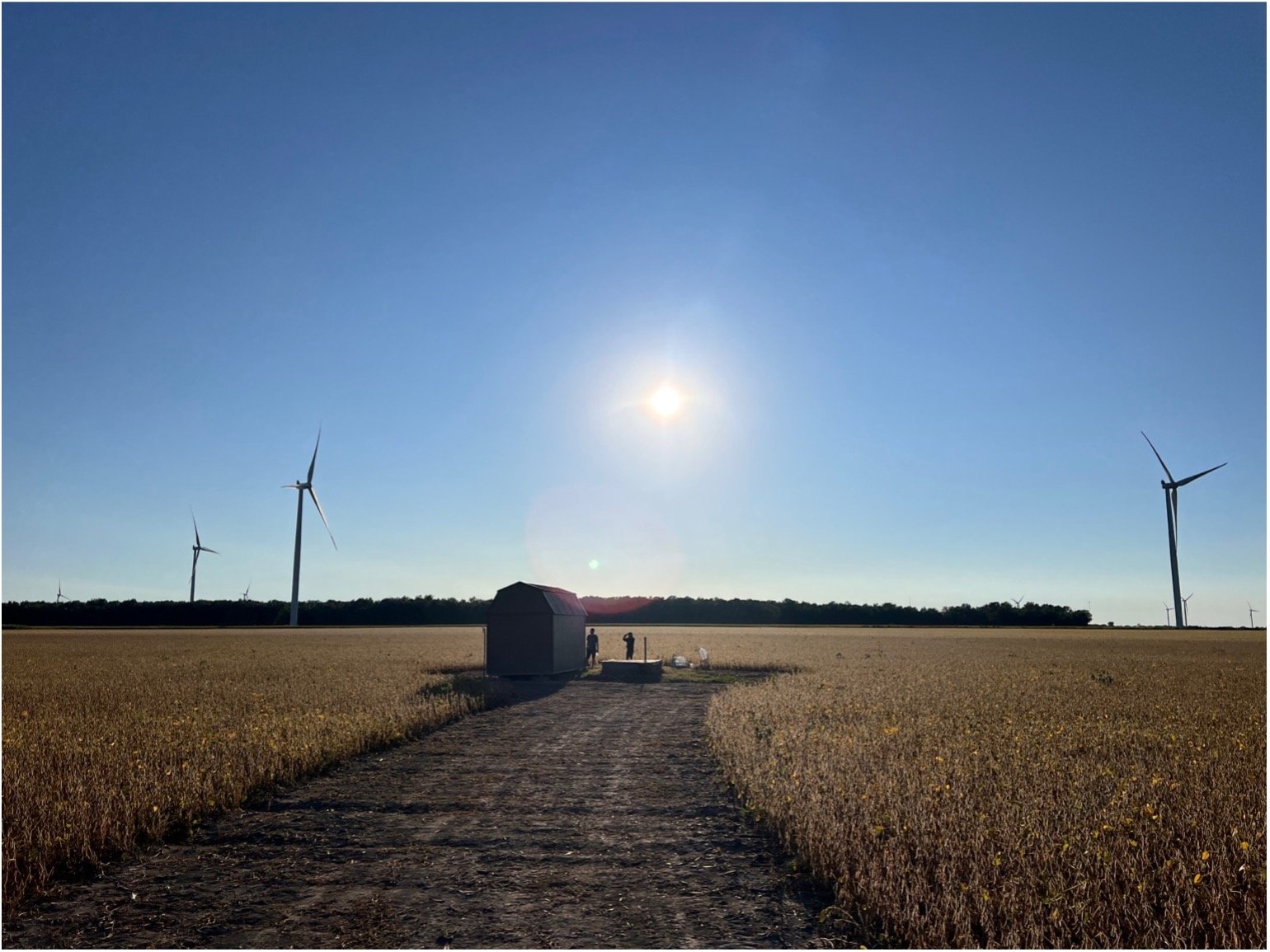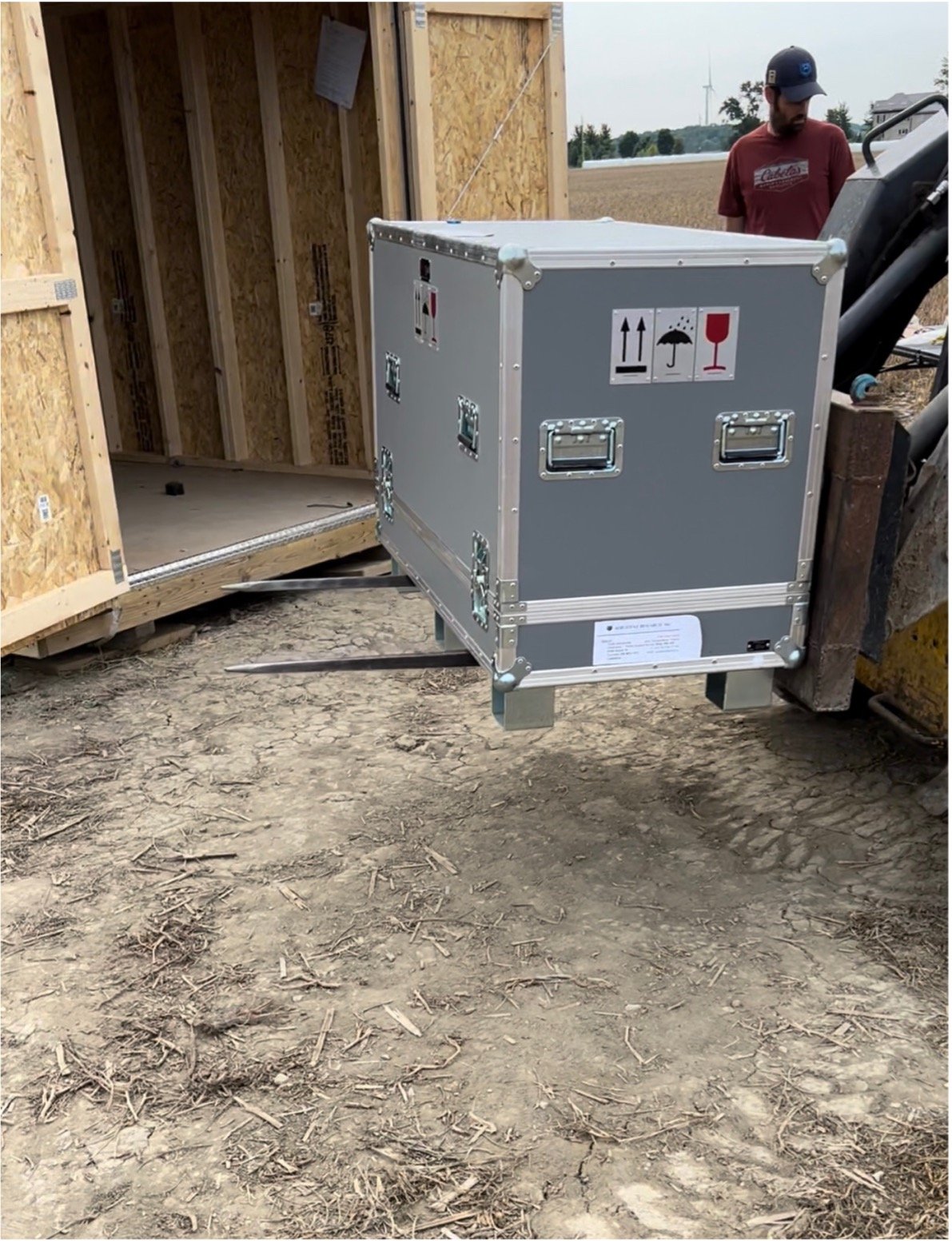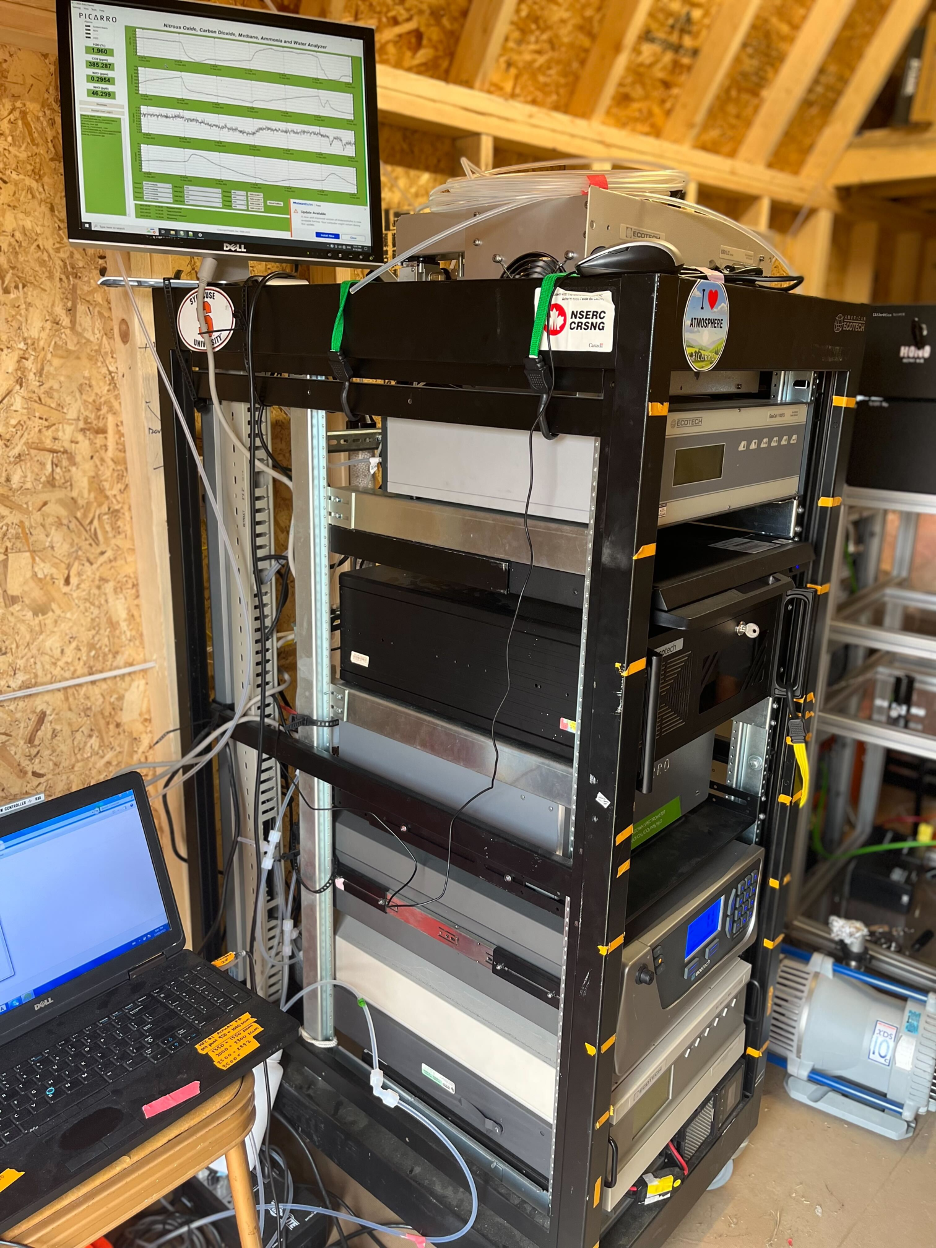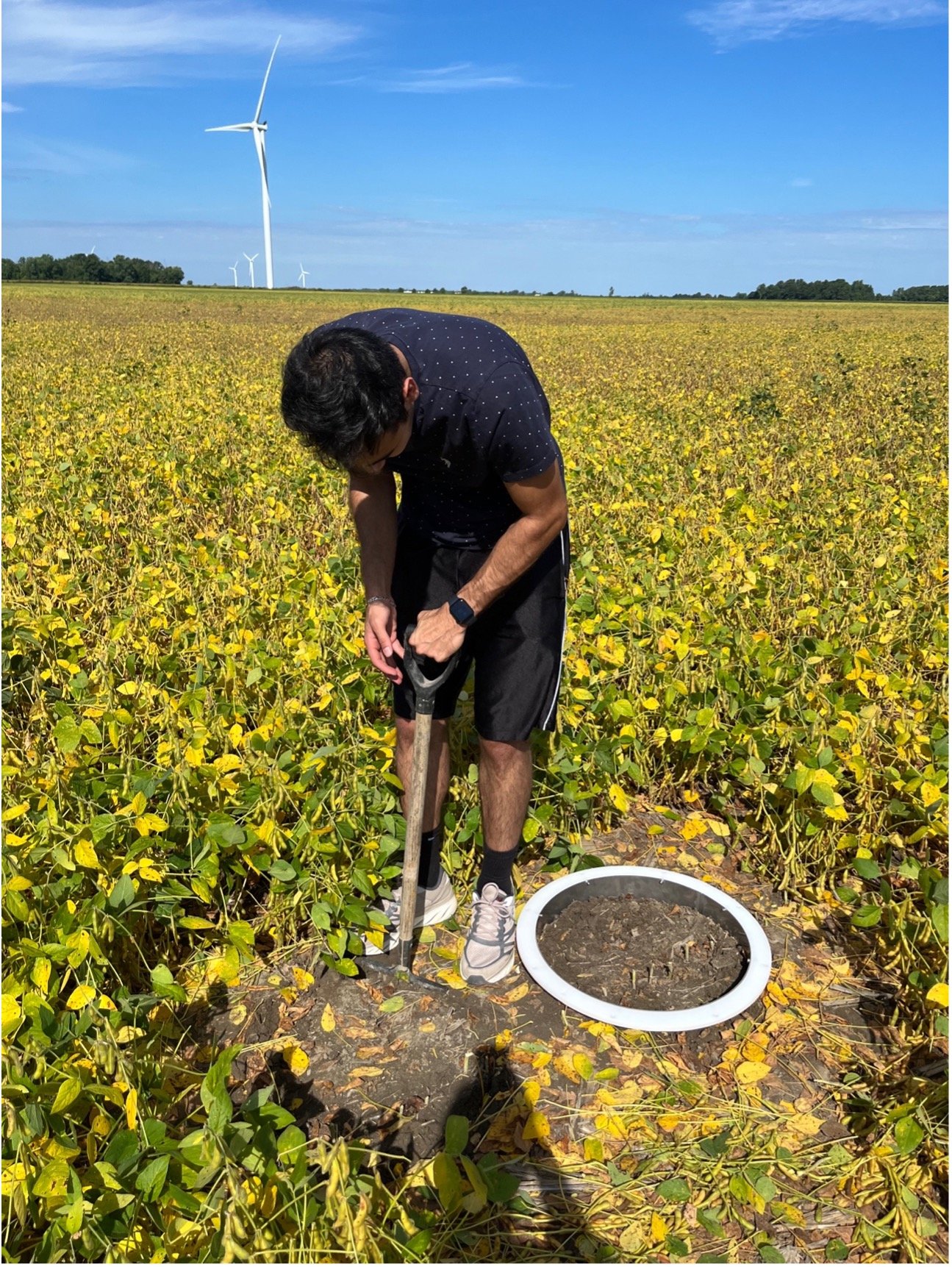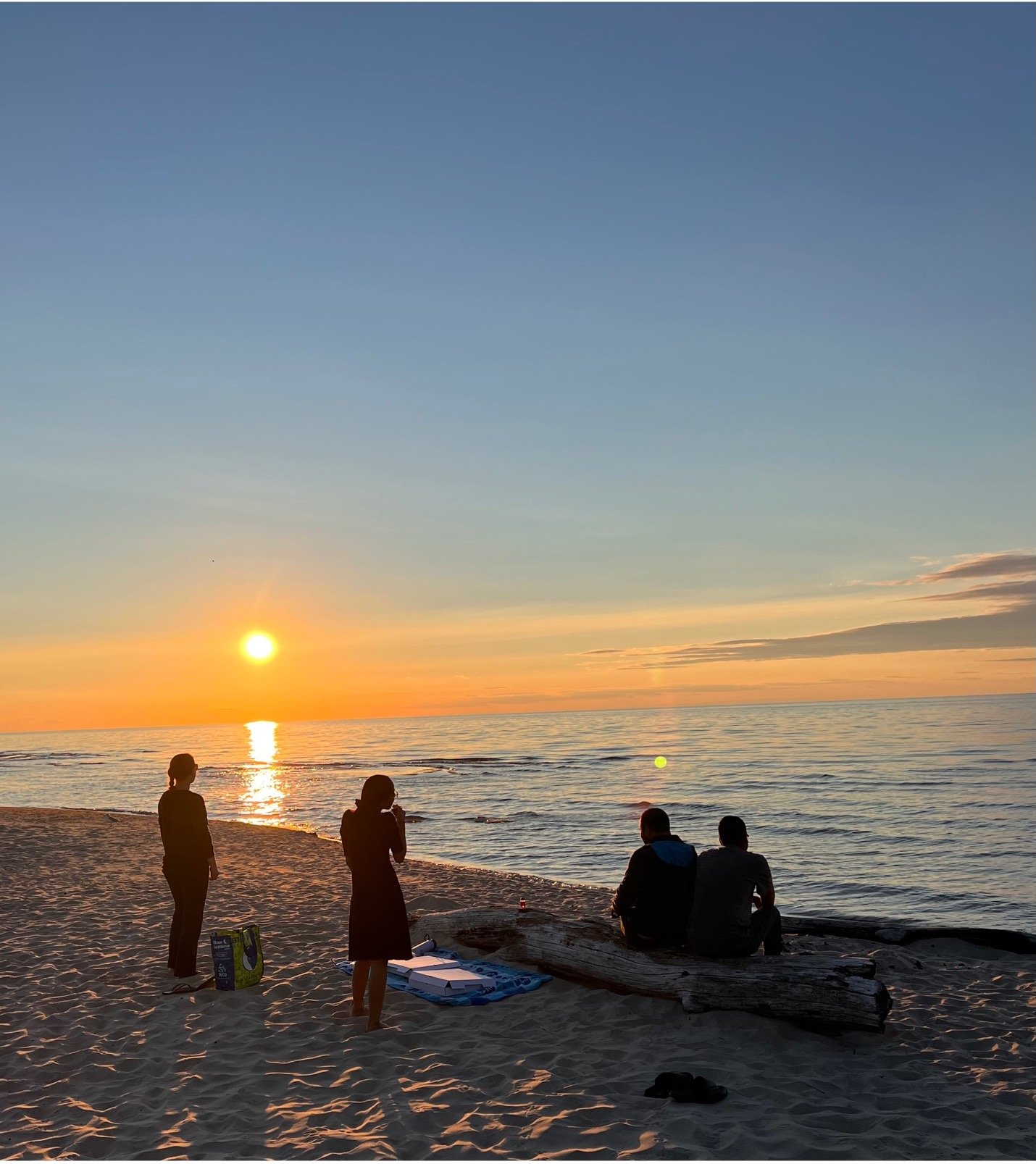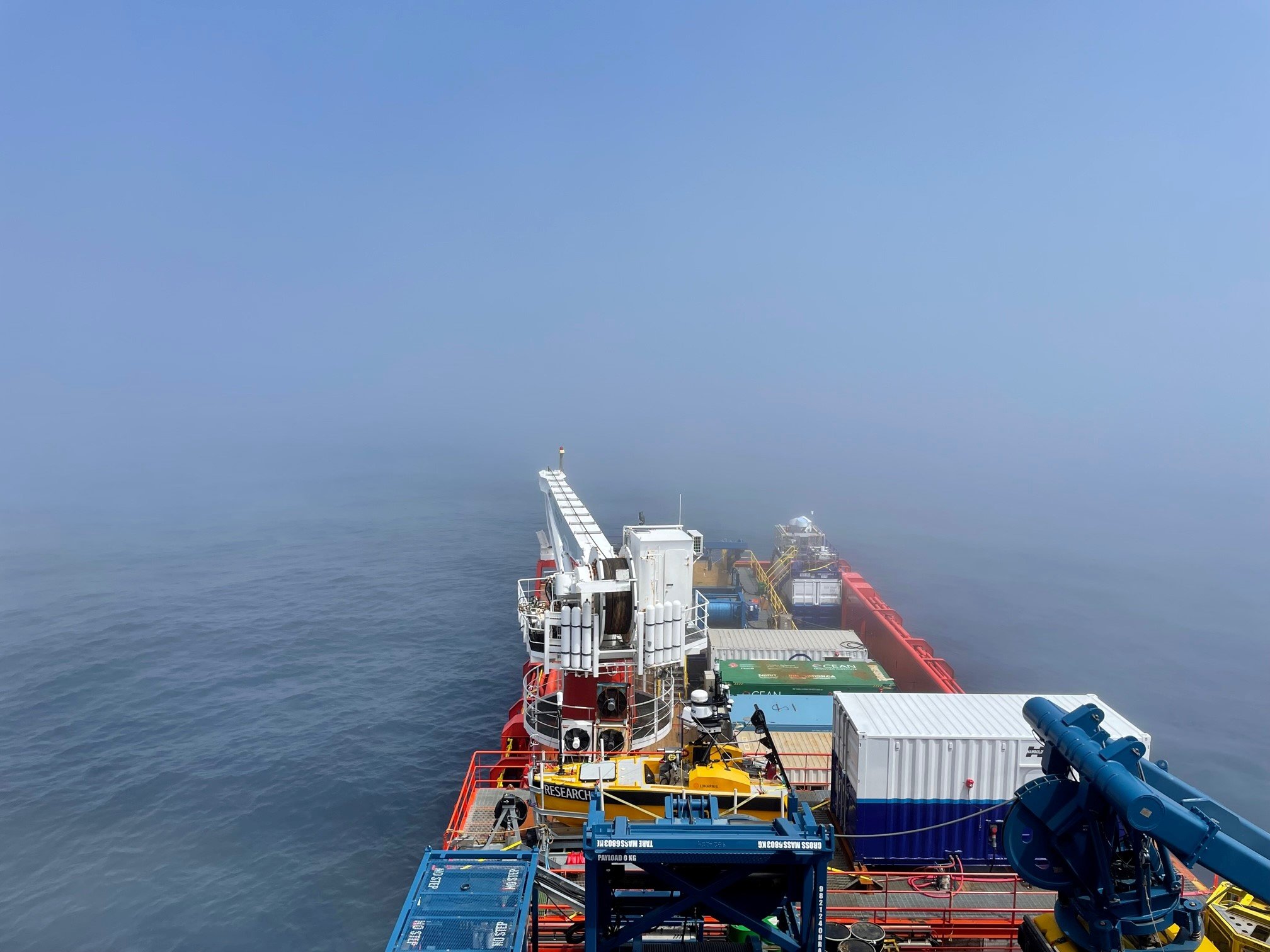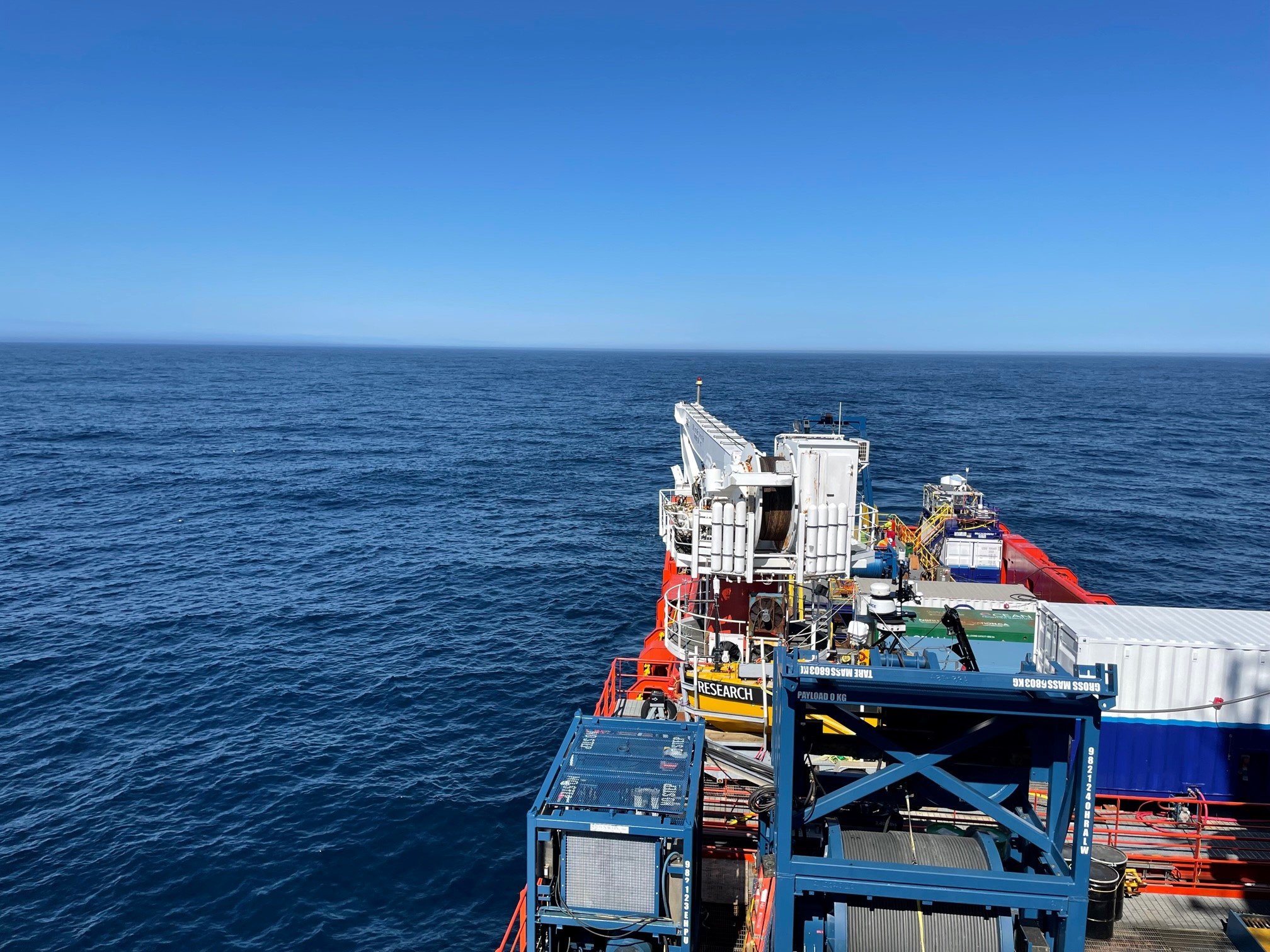In May 2024, I had the pleasure of participating in the next phase of the MAANURE field campaign, MAANURE 2, alongside my research group members Kifle, Tasnia, Danial, and Yash. This phase of the campaign lasted six weeks, offering us an extended period to deepen our research into nitrogenous emissions from agricultural sites under the guidance of my supervisor, Dr. Trevor VandenBoer. Over this time, we worked to build on the findings from the original campaign and explored new dynamics related to nitrogen fertilizers added by farmers during planting, soil interactions, and gas flux before, during and after soybean planting.
My first day back at the site felt like déjà vu, carefully transporting our instruments to the same purpose-built shed that housed them 2 years before. This time, however, we were better prepared with walls insulated in the shed, big shout out to Trevor! With additional experience under our belts and the support of the farm's owner, Casey VandenBoer and team, we were able to set up the instruments more efficiently. Our NOx analyzer, ozone analyzer, greenhouse gas analyzer were installed on the rack. We ran zero checks on all instruments and installed the chambers onto the soil collar. We connected the chambers to our analyzers using multiplexer where both the chambers were controlled by one software unlike original campaign. With our instruments calibrated, we left the site with automated measurements running around the clock, switched ZA cylinders on as needed basis, visited the site twice daily to ensure everything remained operational and to collect data. We also collected 32 soil samples before, during and after planting for further analysis.
While MAANURE 2 was a success, it was not without challenges. The weather was unpredictable, with very hot and humid days to severe wind, rainfall and thunderstorm. Some instruments required frequent recalibrations due to fluctuating temperatures, so we ran frequent zero checks and span checks biweekly. Some days were long with moving chambers from the collar and installing right back when the field was planted and fertilized. Replenishing the protective film to the chamber was needed frequently due to harsh wind blowing right through the chambers. Each challenge, however, provided us with valuable learning experiences that has prepared us for future campaigns.
At the end of the 6-week campaign, we packed up our equipment with a sense of accomplishment and anticipation. MAANURE 2 had exceeded our expectations, providing us with a wealth of data that we are eager to analyze in the coming months. As we continue to unravel the complexities of nitrogenous emissions from agricultural sites, MAANURE 2 has brought us one step closer to understanding these crucial environmental processes. I have gained real insights into fieldwork giving me much deeper appreciation for the dedication and expertise atmospheric scientists bring to field research. And, of course, we managed to carve out some time for the prettiest sunset at beaches with pizza, and great dinner conversations, proving that even in the midst of intense fieldwork, balance is the key.
- Moxy Shah







